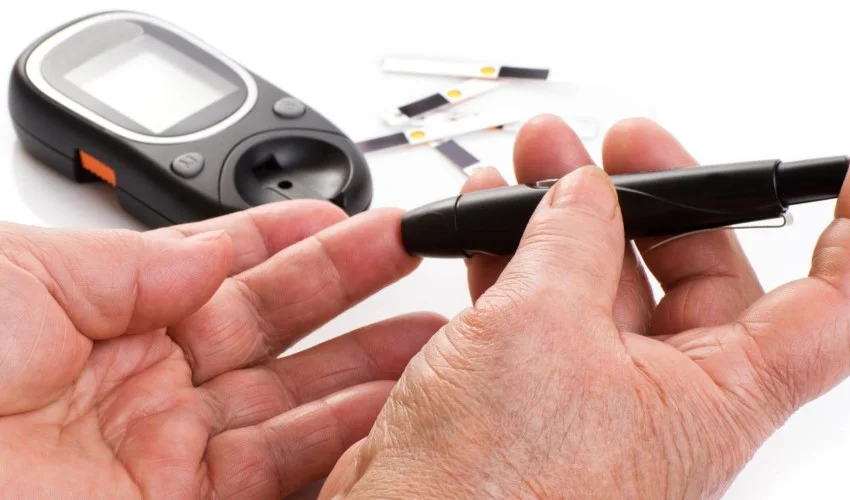Living with diabetes requires diligent management of blood sugar levels. Fluctuations in blood sugar can result in both high (hyperglycemia) and low (hypoglycemia) episodes, which can have severe health implications if not properly addressed. This article aims to provide diabetic patients and caregivers with a comprehensive understanding of high and low blood sugar episodes, including their causes, symptoms, and effective troubleshooting strategies. By implementing the knowledge shared here, individuals can take proactive steps to maintain stable blood sugar levels and lead healthier lives.
Understanding Blood Sugar Levels
To effectively troubleshoot high and low blood sugar episodes, it is essential to comprehend normal blood sugar levels and the role of insulin in regulating them. Normal blood sugar levels typically range between 70 and 130 milligrams per deciliter (mg/dL) before meals, and less than 180 mg/dL two hours after meals. Insulin, a hormone produced by the pancreas, helps facilitate the absorption of glucose from the bloodstream into cells, thereby maintaining optimal blood sugar levels.
Hyperglycemia: High Blood Sugar Episodes
Causes of Hyperglycemia
Hyperglycemia can occur due to various factors, including inadequate insulin doses or non-compliance with medication, consuming excessive carbohydrates or sugary foods, insufficient physical activity, illness or infection, emotional stress, and certain medications.
Symptoms of Hyperglycemia
Recognizing the symptoms of hyperglycemia is crucial for early intervention. Common symptoms include increased thirst and frequent urination, fatigue and weakness, blurred vision, slow-healing wounds, dry mouth, and headaches.
Health Risks Associated with High Blood Sugar
Untreated hyperglycemia can lead to serious complications such as diabetic ketoacidosis (DKA), hyperosmolar hyperglycemic state (HHS), cardiovascular diseases, nerve damage (neuropathy), kidney damage (nephropathy), and eye problems (retinopathy).
Troubleshooting Hyperglycemia
- Regular monitoring of blood sugar levels: Regularly test blood sugar levels as advised by healthcare professionals and keep a record of the readings to identify patterns and make necessary adjustments.
- Adherence to medication and insulin therapy: Take prescribed medications and insulin as instructed. Consult with healthcare professionals before making any changes to medication regimens.
- Balanced diet and carbohydrate management: Follow a well-balanced diet rich in whole grains, lean proteins, fruits, and vegetables. Monitor carbohydrate intake and distribute it evenly throughout the day.
- Physical activity and exercise: Engage in regular physical activity to improve insulin sensitivity and glucose utilization. Consult with healthcare professionals to determine the appropriate exercise regimen.
- Stress management techniques: Practice stress reduction techniques such as meditation, deep breathing, or engaging in hobbies. Seek support from friends, family, or support groups to manage stress effectively.
- Consultation with healthcare professionals: Regularly communicate with healthcare professionals to discuss blood sugar levels, medication adjustments, and any concerns or questions.
Hypoglycemia: Low Blood Sugar Episodes
Causes of Hypoglycemia
Hypoglycemia can occur due to various factors, including delayed or skipped meals, excessive physical activity without adjusting insulin or medication, overdose of insulin or certain medications, alcohol consumption without food, and medical conditions affecting liver or kidney function.
Symptoms of Hypoglycemia
Recognizing the symptoms of hypoglycemia is crucial for timely intervention. Common symptoms include sweating, shakiness or tremors, hunger, dizziness or lightheadedness, confusion or difficulty concentrating, and irritability or mood swings.
Health Risks Associated with Low Blood Sugar
If left untreated, hypoglycemia can lead to severe consequences such as impaired cognitive function, loss of consciousness or seizures, falls or accidents, and rarely, brain damage or death.
Troubleshooting Hypoglycemia
- Regular blood sugar monitoring: Monitor blood sugar levels regularly to identify patterns or potential triggers.
- Identifying potential triggers and patterns: Keep a record of hypoglycemic episodes to identify potential triggers, such as specific foods, exercise routines, or medication adjustments.
- Meal planning and consistent carbohydrate intake: Follow a structured meal plan to ensure consistent carbohydrate intake. Consider consuming a snack before physical activity or adjusting medication doses as advised.
- Timely medication management: Take medications as prescribed and consult with healthcare professionals before making any changes. Understand the effects of medications on blood sugar levels.
- Understanding and addressing exercise-related lows: Adjust insulin or medication doses before engaging in physical activity. Carry a source of fast-acting carbohydrates during exercise.
- Emergency preparedness: Inform family members, friends, or colleagues about hypoglycemia and its symptoms. Always carry a source of fast-acting carbohydrates, such as glucose tablets or juice, for emergency treatment.
Table: Common Symptoms of Hyperglycemia and Hypoglycemia
| Symptom | Hyperglycemia | Hypoglycemia |
|---|---|---|
| Increased thirst | ✔ | |
| Frequent urination | ✔ | |
| Fatigue | ✔ | |
| Blurred vision | ✔ | |
| Slow-healing wounds | ✔ | |
| Dry mouth | ✔ | |
| Headaches | ✔ | |
| Sweating | ✔ | |
| Shakiness/tremors | ✔ | |
| Hunger | ✔ | |
| Dizziness | ✔ | |
| Confusion | ✔ | |
| Irritability | ✔ |
Preventive Measures for Stable Blood Sugar Levels
Healthy eating habits and balanced meals: Consume a well-balanced diet with controlled portions of carbohydrates, proteins, and fats. Incorporate fiber-rich foods to slow down digestion and promote stable blood sugar levels.
Regular physical activity and exercise: Engage in regular physical activity, as recommended by healthcare professionals. Choose activities that you enjoy and can sustain in the long term.
Effective stress management: Practice stress-reduction techniques, such as mindfulness, yoga, or hobbies. Seek support from friends, family, or support groups.
Consistent medication management: Adhere to prescribed medication regimens and consult with healthcare professionals before making any changes.
Routine blood sugar monitoring: Monitor blood sugar levels regularly and keep a record of the readings. Share the records with healthcare professionals to evaluate your management plan.
The Role of Caregivers in Troubleshooting Blood Sugar Episodes
Understanding the caregiver’s role: Educate yourself about diabetes and its management to provide effective support. Encourage open communication with the individual you are caring for.
Effective communication with healthcare professionals: Accompany the individual to healthcare appointments and actively participate in discussions. Share observations, concerns, or questions regarding blood sugar management.
Encouraging adherence to medication and therapy: Remind and assist in medication adherence and insulin administration as needed. Support the individual in attending regular medical check-ups.
Supportive meal planning and preparation: Collaborate with the individual to plan and prepare well-balanced meals. Consider the individual’s preferences and dietary restrictions.
Recognizing and addressing emotional well-being: Offer emotional support and understanding during challenging times. Encourage the individual to seek professional help if needed.
Maintaining stable blood sugar levels is crucial for the well-being of individuals living with diabetes. Hyperglycemia and hypoglycemia episodes require prompt troubleshooting to prevent potential complications. By following the recommendations provided in this article and working closely with healthcare professionals, diabetic patients, and caregivers can effectively manage blood sugar levels and enhance their overall quality of life.




